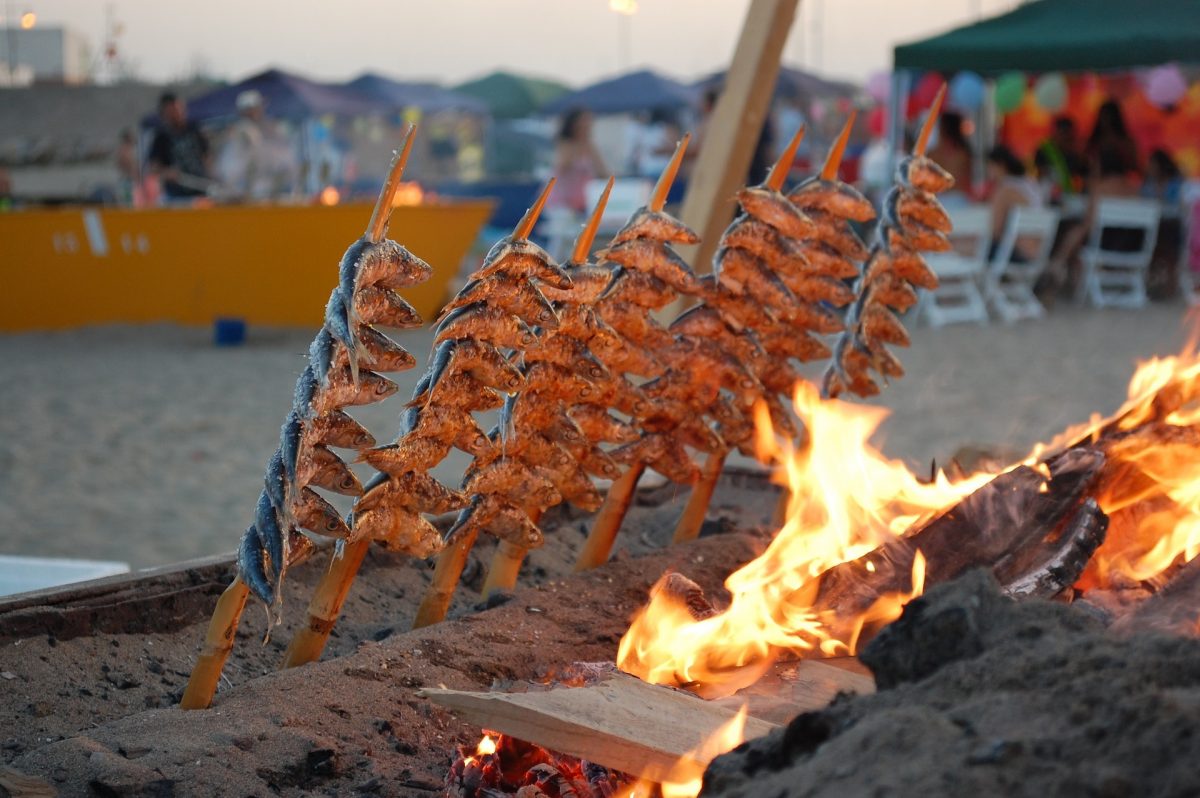Did you know that gazpacho is not the only Spanish cooler? Have you tried espetos de sardinas or jamón ibérico? Why do tapas bars pay for a type of toothpick? Learn about the regional delicacies of Andalusia, served in local markets or restaurants.
Ajoblanco, or almond cooler, rabo de toro (braised oxtail), paella – these are just a few of the Spanish specialities that are known among taste seekers the world over. Spain is famous for its delicious cuisine, natural ingredients, wine and cava. For those looking to change their way of life and buy a house in Spain, cuisine is one of the important reasons to be interested in Andalusia.
Tapas, or snacks
Not many people know, but Andalusia is considered to be the birthplace of tapas, the dish most strongly associated with Spanish cuisine today. There are many myths and legends surrounding the origins of tapas, but the most likely solution is to cover a glass of wine with a dried sausage to protect it from undesirable additives such as dust or insects. Thus was born a tradition that spread throughout the country.
Today, tapas are served in many different ways – they can be simple sandwiches served cold, olives, slices of iberrico ham or fuet sausages, as well as more elaborate starters consisting of many ingredients.

Tapas has penetrated Spanish culture so much that every year, the International Tapas Day is celebrated on the third Thursday of June. It has become a tradition in Spain to go with a group of friends to bars where tapas and wine or beer are ordered. Interestingly, the prices of tapas depend on the type of toothpicks and how they are served. So on the bill you will see information about the number and type of toothpicks! Such a system is useful and very practical, because in tapas bars, waiters pass by every now and then serving hot or cold snacks to choose from. Tapas can also be selected from the menu or ordered at the bar.
For those living in Marbella, or looking for property to buy on the Costa del Sol, we recommend going to Taberna Casa Blanca, Bar Elestrecho or Taberna del Pintxo.
If you want to dine while looking at the sea, at Bodega del Mar tapas are also served in the garden right on the shore.
Specialities of Andalusian cuisine
Paella is an aromatic dish consisting of rice and side dishes – seafood, vegetables, meat, prepared and served in a frying pan. Gazpacho is an Andalusian soup, known as far back as the time of the Moors on the Iberian Peninsula. Back then, its main ingredient was bread to which vinegar, garlic and olive oil were added. Later, tomatoes – today the most famous ingredient in this soup – began to be added. Gazpacho is served cold and there are countless ways of preparing it – some people still add bread to it, and there is also a version with meat, which originated in La Mancha. Although the most famous Spanish dishes in the world are tapas, paella and gazpacho, there are many delicious dishes on the menus of Andalusian restaurants, for example:
- espetos de sardinas – sardines impaled on a wooden stick and roasted over a live fire,
- paella adobo – or paella with vinegar-marinated chicken(adobo just means marinade)
- salmorejo – Andalusian tomato cooler with eggs
- ajoblanco – almond cooler, with bread, oil and garlic
- rabo de toro – braised oxtail served with sauce

In Marbella you will find plenty of excellent restaurants, serving dishes from all over the world. However, if you want to experience the classic flavours of Andalusia then we recommend going to restaurants with regional dishes such as:
- The atmospheric restaurant and beach bar Trocadero de Arena,
- El Ancla restaurant
- Casa Fernando
- Los Mellizos
Also popular on the Costa del Sol are chiringuitos, or restaurants on the beach, with terraces and outdoor tables. Such surroundings allow us to enjoy the wonderful Andalusian cuisine, as well as the beautiful views of the blue sea or the sunset.
Spain – a recipe for healthy living
Spain was ranked the world’s healthiest country by Bloomberg. Among other things, the diet, the obesity rate of the population or life expectancy were taken into account. What influences this? Healthy food, natural ingredients, good wine and, above all, mañana – i.e. stress-free living! Those who want to ‘start living’ appreciate the sun, the microclimate in Marbella thanks to La Concha mountain, the sea views, the golf courses and the greenery. This is why they so often look for their place here, houses and flats on the Costa del Sol.

